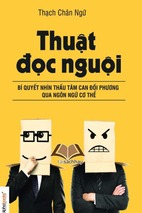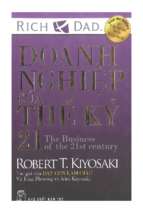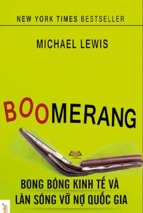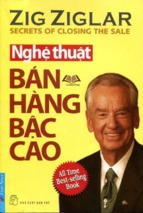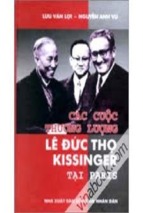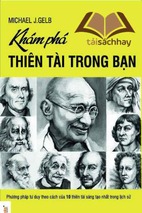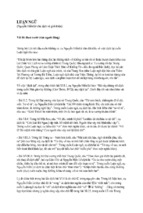PENGUIN BOOKS
FAST FOOD NATION
‘What makes Fast Food Nation different is that it is not the predictable anti-meat, anti-fat, anti-additives, anti-nondairy creamer, anti-have-any-fun rant against M cDonald’s… it is meticulously researched and powerfully argued’
Observer
‘Schlosser could do for the fast food industry what Rachel Carson’s Silent Spring did for producers of pesticides’ The
Times
‘Eric Schlosser may be the Upton Sinclair for this age of mad cow disease… [He has] a flair for dazzling scene-setting
and an arsenal of startling facts… Fast Food Nation points the way, but, to resurrect an old fast-food slogan, the
choice is yours’ Los Angeles Times
‘An elegiac exposé of how burgers, fries and sodas came to symbolize America’ The New York Times Book Review
‘Required reading’ Express
‘One of the best reasons to read Eric Schlosser’s blazing critique of the American fast-food industry is his bleak
portrayal of the alienation of millions of low-paid employees… It would be wrong to portray Schlosser’s book as just
another anti-M cDonald’s diatribe. It is deeper and broader than that’ London Review of Books
‘A frightening investigation into America’s fast food industry’ Independent
‘Compelling… Fast Food Nation will not only make you think twice before eating your next hamburger… it will also
make you think about the fallout that the fast food industry has had on America’s social and cultural landscape’ The
New York Times
‘Our fast food executives are in for some sleepless nights’ Food Magazine
‘M akes for very unsettling reading. A brilliant, access-all-areas dissection of the M cDonaldization of society’ Metro
London
‘His eye is sharp, his profiles perceptive, his prose thoughtful but spare. This is John M cPhee behind the counter’
Washington Post
‘A damning critique of the junk-food business’ Vogue
‘Fast Food Nation is witness to the rigour and seriousness of the best American journalism, readable, reliable and
extremely carefully done’ Daily Telegraph
‘Skilful and persuasive’ Economist
‘If the idea of a three-storey, illuminated Ronald M cDonald strikes you as a blight on the landscape, this book is for
you’ Globe and Mail
Free Download ebook: http://freebookss.com
http://freebookss.com
ABOUT THE AUTHOR
Eric Schlosser is a correspondent for the Atlantic Monthly. He has received a number of
journalistic honours, including a National Magazine Award for an Atlantic article he wrote about
marijuana and the war on drugs. This is his first book.
Free Download ebook: http://freebookss.com
http://freebookss.com
Fast Food
NATION
what the all-american meal is
doing to the world
ERIC SCHLOSSER
PENGUIN BOOKS
http://freebookss.com
PENGUIN BOOKS
Published by the Penguin Group
Penguin Books Ltd, 80 Strand, London WC2R 0RL, England
Penguin Putnam Inc., 375 Hudson Street, New York, New York 10014, USA
Penguin Books Australia Ltd, 250 Camberwell Road, Camberwell, Victoria 3124, Australia
Penguin Books Canada Ltd, 10 Alcorn Avenue, Toronto, Ontario, Canada M 4V 3B2
Penguin Books India (P) Ltd, 11 Community Centre, Panchsheel Park, New Delhi – 110 017. India
Penguin Books (NZ) Ltd, Cnr Rosedale and Airborne Roads, Albany, Auckland, New Zealand
Penguin Books (South Africa) (Pty) Ltd, 24 Sturdee Avenue, Rosebank 2196, South Africa
Penguin Books Ltd, Registered Offices: 80 Strand, London WC2R 0RL, England
www.penguin.com
First published in the USA by Houghton M ifflin Company 2001
First published in Great Britain by Allen Lane The Penguin Press 2001
Published with a new afterword in Penguin Books 2002
47
Copyright © Eric Schlosser, 2002
All rights reserved
The moral right of the author has been asserted
Except in the United States of America, this book is sold subject to the condition that it shall not, by way of trade or
otherwise, be lent, re-sold, hired out, or otherwise circulated without the publisher’s prior consent in any form of binding or
cover other than that in which it is published and without a similar condition including this condition being imposed on the
subsequent purchaser
ISBN: 978-0-14-194421-0
http://freebookss.com
for Red
http://freebookss.com
contents
Introduction
I. The American Way
1. The Founding Fathers
2. Your Trusted Friends
3. Behind the Counter
4. Success
II. Meat and Potatoes
5. Why the Fries Taste Good
6. On the Range
7. Cogs in the Great Machine
8. The Most Dangerous Job
9. What’s in the Meat
10. Global Realization
Epilogue: Have It Your Way
Afterword: The Meaning of Mad Cow
Photo Credits
Notes
Bibliography
Acknowledgments
Index
http://freebookss.com
A savage servility
slides by on grease.
– ROBERT LOWELL
http://freebookss.com
http://freebookss.com
http://freebookss.com
introduction
CHEYENNE M OUNTAIN SITS on the eastern slope of Colorado’s Front Range, rising steeply from
the prairie and overlooking the city of Colorado Springs. From a distance, the mountain appears
beautiful and serene, dotted with rocky outcroppings, scrub oak, and ponderosa pine. It looks like
the backdrop of an old Hollywood western, just another gorgeous Rocky Mountain vista. And yet
Cheyenne Mountain is hardly pristine. One of the nation’s most important military installations lies
deep within it, housing units of the North American Aerospace Command, the Air Force Space
Command, and the United States Space Command. During the mid-1950s, high-level officials at the
Pentagon worried that America’s air defenses had become vulnerable to sabotage and attack.
Cheyenne Mountain was chosen as the site for a top-secret, underground combat operations center.
The mountain was hollowed out, and fifteen buildings, most of them three stories high, were erected
amid a maze of tunnels and passageways extending for miles. The four-and-a-half-acre underground
complex was designed to survive a direct hit by an atomic bomb. Now officially called the Cheyenne
Mountain Air Force Station, the facility is entered through steel blast doors that are three feet thick
and weigh twenty-five tons each; they automatically swing shut in less than twenty seconds. The
base is closed to the public, and a heavily armed quick response team guards against intruders.
Pressurized air within the complex prevents contamination by radioactive fallout and biological
weapons. The buildings are mounted on gigantic steel springs to ride out an earthquake or the blast
wave of a thermonuclear strike. The hallways and staircases are painted slate gray, the ceilings are
low, and there are combination locks on many of the doors. A narrow escape tunnel, entered
through a metal hatch, twists and turns its way out of the mountain through solid rock. The place
feels like the set of an early James Bond movie, with men in jumpsuits driving little electric vans from
one brightly lit cavern to another.
Fifteen hundred people work inside the mountain, maintaining the facility and collecting
information from a worldwide network of radars, spy satellites, ground-based sensors, airplanes,
and blimps. The Cheyenne Mountain Operations Center tracks every manmade object that enters
North American airspace or that orbits the earth. It is the heart of the nation’s early warning system.
It can detect the firing of a long-range missile, anywhere in the world, before that missile has left the
launch pad.
This futuristic military base inside a mountain has the capability to be self-sustaining for at least
one month. Its generators can produce enough electricity to power a city the size of Tampa, Florida.
Its underground reservoirs hold millions of gallons of water; workers sometimes traverse them in
rowboats. The complex has its own underground fitness center, a medical clinic, a dentist’s office, a
barbershop, a chapel, and a cafeteria. When the men and women stationed at Cheyenne Mountain
get tired of the food in the cafeteria, they often send somebody over to the Burger King at Fort
Carson, a nearby army base. Or they call Domino’s.
Almost every night, a Domino’s deliveryman winds his way up the lonely Cheyenne Mountain
Road, past the ominous DEADLY FORCE AUTHORIZED signs, past the security checkpoint at the
entrance of the base, driving toward the heavily guarded North Portal, tucked behind chain link and
barbed wire. Near the spot where the road heads straight into the mountainside, the delivery man
http://freebookss.com
drops off his pizzas and collects his tip. And should Armageddon come, should a foreign enemy
someday shower the United States with nuclear warheads, laying waste to the whole continent,
entombed within Cheyenne Mountain, along with the high-tech marvels, the pale blue jumpsuits,
comic books, and Bibles, future archeologists may find other clues to the nature of our civilization —
Big King wrappers, hardened crusts of Cheesy Bread, Barbeque Wing bones, and the red, white,
and blue of a Domino’s pizza box.
what we eat
OVER THE LAST THREE DECADES,
fast food has infiltrated every nook and cranny of American
society. An industry that began with a handful of modest hot dog and hamburger stands in southern
California has spread to every corner of the nation, selling a broad range of foods wherever paying
customers may be found. Fast food is now served at restaurants and drive-throughs, at stadiums,
airports, zoos, high schools, elementary schools, and universities, on cruise ships, trains, and
airplanes, at K-Marts, Wal-Marts, gas stations, and even at hospital cafeterias. In 1970, Americans
spent about $6 billion on fast food; in 2001, they spent more than $110 billion. Americans now
spend more money on fast food than on higher education, personal computers, computer software,
or new cars. They spend more on fast food than on movies, books, magazines, newspapers, videos,
and recorded music — combined.
Pull open the glass door, feel the rush of cool air, walk in, get on line, study the backlit color
photographs above the counter, place your order, hand over a few dollars, watch teenagers in
uniforms pushing various buttons, and moments later take hold of a plastic tray full of food wrapped
in colored paper and cardboard. The whole experience of buying fast food has become so routine,
so thoroughly unexceptional and mundane, that it is now taken for granted, like brushing your teeth
or stopping for a red light. It has become a social custom as American as a small, rectangular, handheld, frozen, and reheated apple pie.
This is a book about fast food, the values it embodies, and the world it has made. Fast food has
proven to be a revolutionary force in American life; I am interested in it both as a commodity and as
a metaphor. What people eat (or don’t eat) has always been determined by a complex interplay of
social, economic, and technological forces. The early Roman Republic was fed by its citizenfarmers; the Roman Empire, by its slaves. A nation’s diet can be more revealing than its art or
literature. On any given day in the United States about one-quarter of the adult population visits a
fast food restaurant. During a relatively brief period of time, the fast food industry has helped to
transform not only the American diet, but also our landscape, economy, workforce, and popular
culture. Fast food and its consequences have become inescapable, regardless of whether you eat it
twice a day, try to avoid it, or have never taken a single bite.
The extraordinary growth of the fast food industry has been driven by fundamental changes in
American society. Adjusted for inflation, the hourly wage of the average U.S. worker peaked in
1973 and then steadily declined for the next twenty-five years. During that period, women entered
the workforce in record numbers, often motivated less by a feminist perspective than by a need to
pay the bills. In 1975, about one-third of American mothers with young children worked outside the
home; today almost two-thirds of such mothers are employed. As the sociologists Cameron Lynne
Macdonald and Carmen Sirianni have noted, the entry of so many women into the workforce has
greatly increased demand for the types of services that housewives traditionally perform: cooking,
cleaning, and child care. A generation ago, three-quarters of the money used to buy food in the
United States was spent to prepare meals at home. Today about half of the money used to buy food
http://freebookss.com
is spent at restaurants — mainly at fast food restaurants.
The McDonald’s Corporation has become a powerful symbol of America’s service economy,
which is now responsible for 90 percent of the country’s new jobs. In 1968, McDonald’s operated
about one thousand restaurants. Today it has about thirty thousand restaurants worldwide and opens
almost two thousand new ones each year. An estimated one out of every eight workers in the United
States has at some point been employed by McDonald’s. The company annually hires about one
million people, more than any other American organization, public or private. McDonald’s is the
nation’s largest purchaser of beef, pork, and potatoes — and the second largest purchaser of
chicken. The McDonald’s Corporation is the largest owner of retail property in the world. Indeed,
the company earns the majority of its profits not from selling food but from collecting rent.
McDonald’s spends more money on advertising and marketing than any other brand. As a result it
has replaced Coca-Cola as the world’s most famous brand. McDonald’s operates more
playgrounds than any other private entity in the United States. It is one of the nation’s largest
distributors of toys. A survey of American schoolchildren found that 96 percent could identify
Ronald McDonald. The only fictional character with a higher degree of recognition was Santa Claus.
The impact of McDonald’s on the way we live today is hard to overstate. The Golden Arches are
now more widely recognized than the Christian cross.
In the early 1970s, the farm activist Jim Hightower warned of “the McDonaldization of America.”
He viewed the emerging fast food industry as a threat to independent businesses, as a step toward a
food economy dominated by giant corporations, and as a homogenizing influence on American life.
In Eat Your Heart Out (1975), he argued that “bigger is not better.” Much of what Hightower
feared has come to pass. The centralized purchasing decisions of the large restaurant chains and
their demand for standardized products have given a handful of corporations an unprecedented
degree of power over the nation’s food supply. Moreover, the tremendous success of the fast food
industry has encouraged other industries to adopt similar business methods. The basic thinking
behind fast food has become the operating system of today’s retail economy, wiping out small
businesses, obliterating regional differences, and spreading identical stores throughout the country
like a self-replicating code.
America’s main streets and malls now boast the same Pizza Huts and Taco Bells, Gaps and
Banana Republics, Starbucks and Jiffy-Lubes, Foot Lockers, Snip N’ Clips, Sunglass Huts, and
Hobbytown USAs. Almost every facet of American life has now been franchised or chained. From
the maternity ward at a Columbia/HCA hospital to an embalming room owned by Service
Corporation International — “the world’s largest provider of death care services,” based in
Houston, Texas, which since 1968 has grown to include 3,823 funeral homes, 523 cemeteries, and
198 crematoriums, and which today handles the final remains of one out of every nine Americans —
a person can now go from the cradle to the grave without spending a nickel at an independently
owned business.
The key to a successful franchise, according to many texts on the subject, can be expressed in
one word: “uniformity.” Franchises and chain stores strive to offer exactly the same product or
service at numerous locations. Customers are drawn to familiar brands by an instinct to avoid the
unknown. A brand offers a feeling of reassurance when its products are always and everywhere the
same. “We have found out… that we cannot trust some people who are nonconformists,” declared
Ray Kroc, one of the founders of McDonald’s, angered by some of his franchisees. “We will make
conformists out of them in a hurry… The organization cannot trust the individual; the individual must
trust the organization.”
http://freebookss.com
One of the ironies of America’s fast food industry is that a business so dedicated to conformity
was founded by iconoclasts and self-made men, by entrepreneurs willing to defy conventional
opinion. Few of the people who built fast food empires ever attended college, let alone business
school. They worked hard, took risks, and followed their own paths. In many respects, the fast food
industry embodies the best and the worst of American capitalism at the start of the twenty-first
century — its constant stream of new products and innovations, its widening gulf between rich and
poor. The industrialization of the restaurant kitchen has enabled the fast food chains to rely upon a
low-paid and unskilled workforce. While a handful of workers manage to rise up the corporate
ladder, the vast majority lack full-time employment, receive no benefits, learn few skills, exercise
little control over their workplace, quit after a few months, and float from job to job. The restaurant
industry is now America’s largest private employer, and it pays some of the lowest wages. During
the economic boom of the 1990s, when many American workers enjoyed their first pay raises in a
generation, the real value of wages in the restaurant industry continued to fall. The roughly 3.5 million
fast food workers are by far the largest group of minimum wage earners in the United States. The
only Americans who consistently earn a lower hourly wage are migrant farm workers.
A hamburger and french fries became the quintessential American meal in the 1950s, thanks to
the promotional efforts of the fast food chains. The typical American now consumes approximately
three hamburgers and four orders of french fries every week. But the steady barrage of fast food
ads, full of thick juicy burgers and long golden fries, rarely mentions where these foods come from
nowadays or what ingredients they contain. The birth of the fast food industry coincided with
Eisenhower-era glorifications of technology, with optimistic slogans like “Better Living through
Chemistry” and “Our Friend the Atom.” The sort of technological wizardry that Walt Disney
promoted on television and at Disneyland eventually reached its fulfillment in the kitchens of fast food
restaurants. Indeed, the corporate culture of McDonald’s seems inextricably linked to that of the
Disney empire, sharing a reverence for sleek machinery, electronics, and automation. The leading
fast food chains still embrace a boundless faith in science — and as a result have changed not just
what Americans eat, but also how their food is made.
The current methods for preparing fast food are less likely to be found in cookbooks than in trade
journals such as Food Technologist and Food Engineering. Aside from the salad greens and
tomatoes, most fast food is delivered to the restaurant already frozen, canned, dehydrated, or
freeze-dried. A fast food kitchen is merely the final stage in a vast and highly complex system of
mass production. Foods that may look familiar have in fact been completely reformulated. What we
eat has changed more in the last forty years than in the previous forty thousand. Like Cheyenne
Mountain, today’s fast food conceals remarkable technological advances behind an ordinary-looking
façade. Much of the taste and aroma of American fast food, for example, is now manufactured at a
series of large chemical plants off the New Jersey Turnpike.
In the fast food restaurants of Colorado Springs, behind the counters, amid the plastic seats, in
the changing landscape outside the window, you can see all the virtues and destructiveness of our
fast food nation. I chose Colorado Springs as a focal point for this book because the changes that
have recently swept through the city are emblematic of those that fast food — and the fast food
mentality — have encouraged throughout the United States. Countless other suburban communities,
in every part of the country, could have been used to illustrate the same points. The extraordinary
growth of Colorado Springs neatly parallels that of the fast food industry: during the last few
decades, the city’s population has more than doubled. Subdivisions, shopping malls, and chain
restaurants are appearing in the foothills of Cheyenne Mountain and the plains rolling to the east. The
Rocky Mountain region as a whole has the fastest-growing economy in the United States, mixing
http://freebookss.com
high-tech and service industries in a way that may define America’s workforce for years to come.
And new restaurants are opening there at a faster pace than anywhere else in the nation.
Fast food is now so commonplace that it has acquired an air of inevitability, as though it were
somehow unavoidable, a fact of modern life. And yet the dominance of the fast food giants was no
more preordained than the march of colonial split-levels, golf courses, and man-made lakes across
the deserts of the American West. The political philosophy that now prevails in so much of the West
— with its demand for lower taxes, smaller government, an unbridled free market — stands in total
contradiction to the region’s true economic underpinnings. No other region of the United States has
been so dependent on government subsidies for so long, from the nineteenth-century construction of
its railroads to the twentieth-century financing of its military bases and dams. One historian has
described the federal government’s 1950s highway-building binge as a case study in “interstate
socialism” — a phrase that aptly describes how the West was really won. The fast food industry
took root alongside that interstate highway system, as a new form of restaurant sprang up beside the
new off-ramps. Moreover, the extraordinary growth of this industry over the past quarter-century
did not occur in a political vacuum. It took place during a period when the inflation-adjusted value of
the minimum wage declined by about 40 percent, when sophisticated mass marketing techniques
were for the first time directed at small children, and when federal agencies created to protect
workers and consumers too often behaved like branch offices of the companies that were supposed
to be regulated. Ever since the administration of President Richard Nixon, the fast food industry has
worked closely with its allies in Congress and the white House to oppose new worker safety, food
safety, and minimum wage laws. While publicly espousing support for the free market, the fast food
chains have quietly pursued and greatly benefited from a wide variety of government subsidies. Far
from being inevitable, America’s fast food industry in its present form is the logical outcome of
certain political and economic choices.
In the potato fields and processing plants of Idaho, in the ranch-lands east of Colorado Springs,
in the feedlots and slaughterhouses of the High Plains, you can see the effects of fast food on the
nation’s rural life, its environment, its workers, and its health. The fast food chains now stand atop a
huge food-industrial complex that has gained control of American agriculture. During the 1980s,
large multinationals — such as Cargill, ConAgra, and IBP — were allowed to dominate one
commodity market after another. Farmers and cattle ranchers are losing their independence,
essentially becoming hired hands for the agribusiness giants or being forced off the land. Family
farms are now being replaced by gigantic corporate farms with absentee owners. Rural communities
are losing their middle class and becoming socially stratified, divided between a small, wealthy elite
and large numbers of the working poor. Small towns that seemingly belong in a Norman Rockwell
painting are being turned into rural ghettos. The hardy, independent farmers whom Thomas Jefferson
considered the bedrock of American democracy are a truly vanishing breed. The United States now
has more prison inmates than full-time farmers.
The fast food chains’ vast purchasing power and their demand for a uniform product have
encouraged fundamental changes in how cattle are raised, slaughtered, and processed into ground
beef. These changes have made meatpacking — once a highly skilled, highly paid occupation —
into the most dangerous job in the United States, performed by armies of poor, transient immigrants
whose injuries often go unrecorded and uncompensated. And the same meat industry practices that
endanger these workers have facilitated the introduction of deadly pathogens, such as E. coli
0157:H7, into America’s hamburger meat, a food aggressively marketed to children. Again and
again, efforts to prevent the sale of tainted ground beef have been thwarted by meat industry
lobbyists and their allies in Congress. The federal government has the legal authority to recall a
http://freebookss.com
defective toaster oven or stuffed animal — but still lacks the power to recall tons of contaminated,
potentially lethal meat.
I do not mean to suggest that fast food is solely responsible for every social problem now
haunting the United States. In some cases (such as the malling and sprawling of the West) the fast
food industry has been a catalyst and a symptom of larger economic trends. In other cases (such as
the rise of franchising and the spread of obesity) fast food has played a more central role. By tracing
the diverse influences of fast food I hope to shed light not only on the workings of an important
industry, but also on a distinctively American way of viewing the world.
Elitists have always looked down at fast food, criticizing how it tastes and regarding it as another
tacky manifestation of American popular culture. The aesthetics of fast food are of much less
concern to me than its impact upon the lives of ordinary Americans, both as workers and
consumers. Most of all, I am concerned about its impact on the nation’s children. Fast food is
heavily marketed to children and prepared by people who are barely older than children. This is an
industry that both feeds and feeds off the young. During the two years spent researching this book, I
ate an enormous amount of fast food. Most of it tasted pretty good. That is one of the main reasons
people buy fast food; it has been carefully designed to taste good. It’s also inexpensive and
convenient. But the value meals, two-for-one deals, and free refills of soda give a distorted sense of
how much fast food actually costs. The real price never appears on the menu.
The sociologist George Ritzer has attacked the fast food industry for celebrating a narrow
measure of efficiency over every other human value, calling the triumph of McDonald’s “the
irrationality of rationality.” Others consider the fast food industry proof of the nation’s great
economic vitality, a beloved American institution that appeals overseas to millions who admire our
way of life. Indeed, the values, the culture, and the industrial arrangements of our fast food nation are
now being exported to the rest of the world. Fast food has joined Hollywood movies, blue jeans,
and pop music as one of America’s most prominent cultural exports. Unlike other commodities,
however, fast food isn’t viewed, read, played, or worn. It enters the body and becomes part of the
consumer. No other industry offers, both literally and figuratively, so much insight into the nature of
mass consumption.
Hundreds of millions of people buy fast food every day without giving it much thought, unaware of
the subtle and not so subtle ramifications of their purchases. They rarely consider where this food
came from, how it was made, what it is doing to the community around them. They just grab their
tray off the counter, find a table, take a seat, unwrap the paper, and dig in. The whole experience is
transitory and soon forgotten. I’ve written this book out of a belief that people should know what
lies behind the shiny, happy surface of every fast food transaction. They should know what really
lurks between those sesame-seed buns. As the old saying goes: You are what you eat.
http://freebookss.com
I/the american way
http://freebookss.com
http://freebookss.com
1/ the founding fathers
CARL N. KARCHER is one of the fast food industry’s pioneers. His career extends from the
industry’s modest origins to its current hamburger hegemony. His life seems at once to be a tale by
Horatio Alger, a fulfillment of the American dream, and a warning about unintended consequences.
It is a fast food parable about how the industry started and where it can lead. At the heart of the
story is southern California, whose cities became prototypes for the rest of the nation, whose love of
the automobile changed what America looks like and what Americans eat.
Carl was born in 1917 on a farm near Upper Sandusky, Ohio. His father was a sharecropper
who moved the family to new land every few years. The Karchers were German-American,
industrious, and devoutly Catholic. Carl had six brothers and a sister. “The harder you work,” their
father always told them, “the luckier you become.” Carl dropped out of school after the eighth grade
and worked twelve to fourteen hours a day on the farm, harvesting with a team of horses, baling hay,
milking and feeding the cows. In 1937, Ben Karcher, one of Carl’s uncles, offered him a job in
Anaheim, California. After thinking long and hard and consulting with his parents, Carl decided to go
west. He was twenty years old and six-foot-four, a big strong farm boy. He had never set foot
outside of northern Ohio. The decision to leave home felt momentous, and the drive to California
took a week. When he arrived in Anaheim — and saw the palm trees and orange groves, and
smelled the citrus in the air — Carl said to himself, “This is heaven.”
Anaheim was a small town in those days, surrounded by ranches and farms. It was located in the
heart of southern California’s citrus belt, an area that produced almost all of the state’s oranges,
lemons, and tangerines. Orange County and neighboring Los Angeles County were the leading
agricultural counties in the United States, growing fruits, nuts, vegetables, and flowers on land that
only a generation earlier had been a desert covered in sagebrush and cactus. Massive irrigation
projects, built with public money to improve private land, brought water from hundreds of miles
away. The Anaheim area alone boasted about 70,000 acres of Valencia oranges, as well as lemon
groves and walnut groves. Small ranches and dairy farms dotted the land, and sunflowers lined the
back roads. Anaheim had been settled in the late nineteenth century by German immigrants hoping
to create a local wine industry and by a group of Polish expatriates trying to establish a back-to-theland artistic community. The wineries flourished for three decades; the art colony collapsed within a
few months. After World War I, the heavily German character of Anaheim gave way to the influence
of newer arrivals from the Midwest, who tended to be Protestant and conservative and evangelical
about their faith. Reverend Leon L. Myers — pastor of the Anaheim Christian Church and founder
of the local Men’s Bible Club — turned the Ku Klux Klan into one of the most powerful
organizations in town. During the early 1920s, the Klan ran Anaheim’s leading daily newspaper,
controlled the city government for a year, and posted signs on the outskirts of the city greeting
newcomers with the acronym “KIGY” (Klansmen I Greet You).
Carl’s uncle Ben owned Karcher’s Feed and Seed Store, right in the middle of downtown
Anaheim. Carl worked there seventy-six hours a week, selling goods to local farmers for their
chickens, cattle, and hogs. During Sunday services at St. Boniface Catholic Church, Carl spotted an
attractive young woman named Margaret Heinz sitting in a nearby pew. He later asked her out for
http://freebookss.com
ice cream, and the two began dating. Carl became a frequent visitor to the Heinz farm on North
Palm Street. It had ten acres of orange trees and a Spanish-style house where Margaret, her
parents, her seven brothers, and her seven sisters lived. The place seemed magical. In the social
hierarchy of California’s farmers, orange growers stood at the very top; their homes were set amid
fragrant evergreen trees that produced a lucrative income. As a young boy in Ohio, Carl had been
thrilled on Christmas mornings to receive a single orange as a gift from Santa. Now oranges seemed
to be everywhere.
Margaret worked as a secretary at a law firm downtown. From her office window on the fourth
floor, she could watch Carl grinding feed outside his uncle’s store. After briefly returning to Ohio,
Carl went to work for the Armstrong Bakery in Los Angeles. The job soon paid $24 a week, $6
more than he’d earned at the feed store — and enough to start a family. Carl and Margaret were
married in 1939 and had their first child within a year.
Carl drove a truck for the bakery, delivering bread to restaurants and markets in west L.A. He
was amazed by the number of hot dog stands that were opening and by the number of buns they
went through every week. When Carl heard that a hot dog cart was for sale — on Florence Avenue
across from the Goodyear factory — he decided to buy it. Margaret strongly opposed the idea,
wondering where he’d find the money. He borrowed $311 from the Bank of America, using his car
as collateral for the loan, and persuaded his wife to give him $15 in cash from her purse. “I’m in
business for myself now,” Carl thought, after buying the cart, “I’m on my way.” He kept his job at
the bakery and hired two young men to work the cart during the hours he was delivering bread.
They sold hot dogs, chili dogs, and tamales for a dime each, soda for a nickel. Five months after
Carl bought the cart, the United States entered World War II, and the Goodyear plant became very
busy. Soon he had enough money to buy a second hot dog cart, which Margaret often ran by
herself, selling food and counting change while their daughter slept nearby in the car.
Southern California had recently given birth to an entirely new lifestyle — and a new way of
eating. Both revolved around cars. The cities back East had been built in the railway era, with
central business districts linked to outlying suburbs by commuter train and trolley. But the
tremendous growth of Los Angeles occurred at a time when automobiles were finally affordable.
Between 1920 and 1940, the population of southern California nearly tripled, as about 2 million
people arrived from across the United States. While cities in the East expanded through immigration
and became more diverse, Los Angeles became more homogenous and white. The city was
inundated with middle-class arrivals from the Midwest, especially in the years leading up to the
Great Depression. Invalids, retirees, and small businessmen were drawn to southern California by
real estate ads promising a warm climate and a good life. It was the first large-scale migration
conducted mainly by car. Los Angeles soon became unlike any other city the world had ever seen,
sprawling and horizontal, a thoroughly suburban metropolis of detached homes — a glimpse of the
future, molded by the automobile. About 80 percent of the population had been born elsewhere;
about half had rolled into town during the previous five years. Restlessness, impermanence, and
speed were embedded in the culture that soon emerged there, along with an openness to anything
new. Other cities were being transformed by car ownership, but none was so profoundly altered. By
1940, there were about a million cars in Los Angeles, more cars than in forty-one states.
The automobile offered drivers a feeling of independence and control. Daily travel was freed from
the hassles of rail schedules, the needs of other passengers, and the location of trolley stops. More
importantly, driving seemed to cost much less than using public transport — an illusion created by
the fact that the price of a new car did not include the price of building new roads. Lobbyists from
the oil, tire, and automobile industries, among others, had persuaded state and federal agencies to
http://freebookss.com
- Xem thêm -



